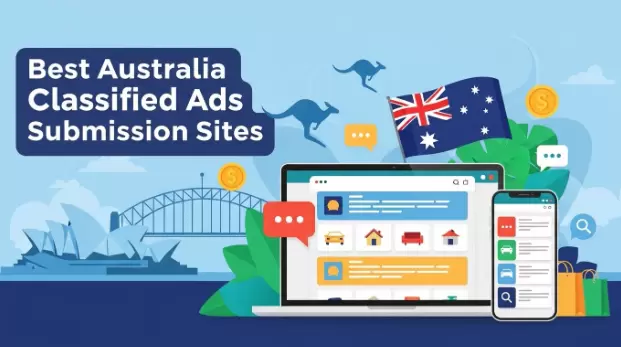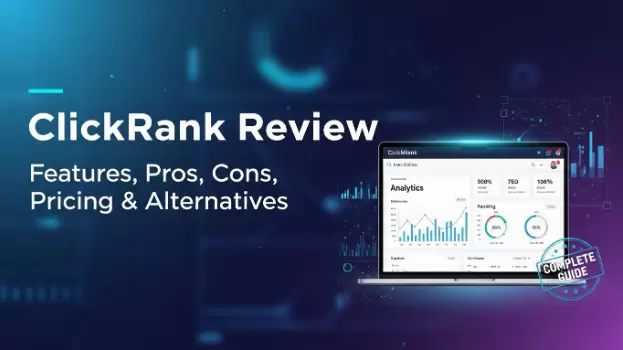Small businesses all over the world understand that social media is here to stay. You need to look at the social media demographics across platforms to see that! However, this does not imply that you have had the opportunity to invest the time and effort required to build a proper presence on the relevant networks.
Facebook, Twitter, Instagram, Pinterest, and Google Plus are all popular social networking platforms. Not to mention the numerous other little websites that can be found on the internet today. Everyone wants their business to be recognized on social media.
Here are all of the social media marketing tips you'll need in 2021.
How to Increase Your Social Media Presence the Right Way
Having a good, or even excellent, social media presence can help your business grow like wildflowers. However, this will only happen if you build a significant following and learn to provide what they want. Here are some great ways for any business owner or marketer to boost their social media presence and help their brand grow.
1. Choose the Right Platform for your Business
Since Facebook turned public in 2012, social media has expanded, with thousands of networks dedicated to anything from connecting with classmates to social action.
Thus, with so many options, how can a company choose the best ones? Most experts advise joining the most popular, and choosing the proper ones depends on your audience and your objectives. Here are some resources to get you started:
- Facebook: the most significant platform, has 2.89 billion active monthly users, and the site is ideal for businesses that want to generate leads and build relationships. If you're a beginner to the network, check out this guide to advertising on Facebook.
- Instagram: Instagram was created in 2010 as a mobile photo and video-sharing application, allows users to upload photos and videos directly from their phones. It was bought by Facebook in 2011 and has since grown to become one of the world's most popular photo-sharing applications, with estimated 1.4 million users.
- Twitter: This platform is speed and ideal for businesses whose primary audience is under 50 and who need to stay on top of time-sensitive content such as big news, promotions, and trending topics.
- LinkedIn: It is the business networking platform that can be used by both B2B and B2C businesses to establish trust, authority and engage audiences.
- Pinterest: The photo-sharing website is an excellent platform for businesses with a strong visual image. It's more for social discovery than social networking, and it's excellent for driving sales since so many people use it to plan purchases.
- Snapchat: One of the fastest growing social networking sites despite rumours of Snap being in trouble a few years ago. Businesses can leverage Snapchat by offering promotions, personalized content, and building relationships with influencers to drive brand recognition and loyalty.
- TikTok: TikTok, a social media phenomenon, has increased during the Covid-19 pandemic. Due to its popularity among influencers and celebrities, it is the first app not owned by Facebook to have 3 billion installations. The platform's usability, colossal music database, and one-of-a-kind filters entice a younger population.
2. Set your Goal and Objectives
Setting goals and objectives is the first step in increasing your social media presence. It indicates that before you start posting, be sure you know what you're pursuing. Make sure you understand how each platform works, what audiences you can reach where, and what your goals are, and you'll be off to a good start.
Set objectives that comply with the SMART framework. They should be precise, quantifiable, reachable, relevant, and time-bound.
- Specific
- Measurable
- Achievable
- Relevant
- Time-bound
3. Understand Their Needs
Understanding your audience's demands will allow you to communicate with them in a more personal way. Knowing what they like to read about and what they believe in can help you figure out what you should provide them. Once you understand this, you can provide them whatever they want, which includes getting them to your website to learn more about your business.
4. Know your audience
One of the benefits of using social media for the company is that you can micro-target your audience. But first, you should determine who your target audience is.
Start by gathering information about your present consumers. Then, using social media analytics, dig even more profound. You'll quickly learn who is purchasing from you and interacting with you online.
Insights from Hootsuite Powered by Brandwatch, you can discover granular information such as the most popular hashtags, referral sites, and even particular social writers for terms relevant to your brand.
After you've established your target, you can create buyer personas to help you identify the best methods to communicate with them. We have a free buyer persona template to get you started.
5. Produce Valuable Content
It would help if you also ensured that you provided the most valuable material for your blog and social media accounts. Having the most excellent content promotes your business and website, bringing in more consumers and money.
Whatever your target audience is, the content you provide should always be of good quality and relevant. You should analyze popular content formats and promote a video, photos, and other types of visual content as much as possible since these are popular with all demographics and audiences.
6. Find Tools to Schedule and Automate Posts for more engagements
It takes effort and attention to stay active and present on social media. However, content writers can use automation technologies to automatically publish and plan posts up to a month in advance.
These programs, which include Hootsuite, Sprout Social, Buffer, MeetEdgar, and BuzzSumo, can save you time by helping you to plan and schedule many articles at once. They also make it easy to monitor your networks and respond to notifications immediately.
7. Engage your audience in relevant ways
These programs, which include Hootsuite, Sprout Social, Buffer, MeetEdgar, and BuzzSumo, can save you time by helping you to plan and schedule many articles at once. They also make it easy to monitor your networks and respond to notifications immediately.
You can interact with your audience in a variety of ways, such as:
- Comment on posts
- Start and participate in conversations
- Share relevant information
- Share user-generated content (UGC)
- Ask and answer questions
- Post polls and follow up with the results
- Address complaints and criticisms
- Show appreciation for customers
8. Seek relationships
We could debate all day about whether your following count is a vanity statistic.
However, having 100 followers who regularly connect with you and your work is far more helpful than having 10,000 who ignore you.
It may sound cliche, but don't forget to include the word "social" in your social media presence. The beauty of social media is that you can create relationships with people from all around the world instantly.
9. Always active to customer’s complaints efficiently and provide Q&A’s
If you receive a complaint about your website, deal with it as soon as possible. Even if it isn't, respond and be professional. Ensure to take excellent care of them by responding to the queries as soon as possible and offering excellent customer service.
You should also ask and answer questions on your social media channels and website. Use a commonly asked questions area to assist you in efficiently addressing their questions.
10. Stay Active
Inactive social feeds are a negative look for businesses, plain and simple. Instead of allowing your Facebook or Instagram account to build dust, you must "show up" with new content every day.
Some quick tips to help you stay active include:
- Social scheduling and automation are being used to save time and energy.
- Select and rank your social networks based on the location of your target audience.
- Find methods to repurpose content so that you aren't continually trying to reinvent the wheel.
Staying engaged on social media doesn't have to be a time-consuming task. You can post content and reply to customer problems without wasting time by scheduling or simply blocking out 10-15 minute chunks throughout the day. You can also plan your activities around the best times to post on social media to increase engagement.
Final Thoughts
You should now have a better knowledge of how social media may help your eCommerce website or your business. Keep in mind that not all of the content or techniques mentioned will work for your business. Try each one, learn from your performance, and continue to improve. It's now up to you to include social media into your small business marketing plan.


 Table of Content
Table of Content










